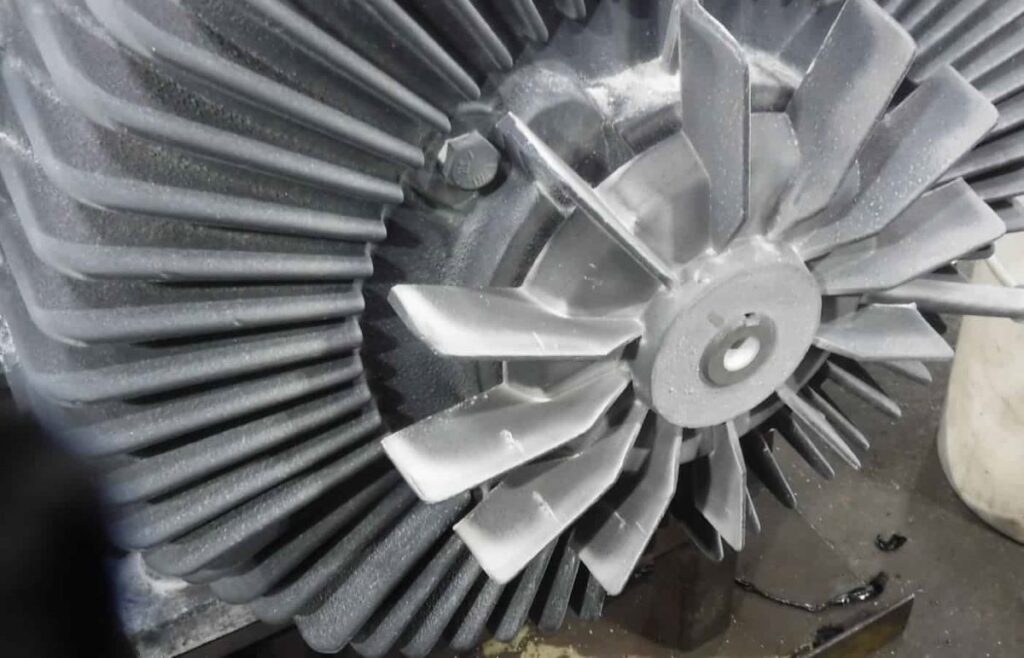Removing the fan of an electric motor (plastic, cast iron, or aluminum)
Most electric motors have an external fan. It’s a way of cooling the motor, especially the enclosed motor with no air vents.
The term is TEFC which stands for totally enclosed fan cooled motors.
Not unlike the bigger U-frame of older motors, nowadays, they are compact.
The same horsepower motors are built in smaller frames and even designed for higher efficiency. The result is they run warmer that is why they have a cooling fan
Besides external cooling fans, some motors of Baldor and Toshiba have internal cooling fans. These fans are meant to directly cool down the windings inside the motor.
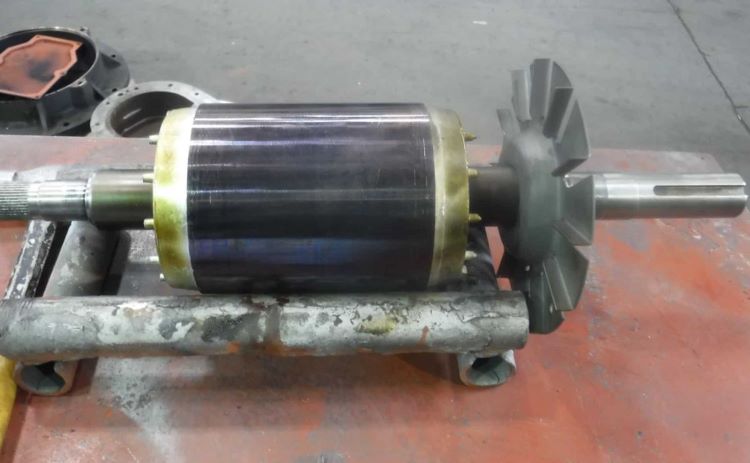
Fans are commonly made of plastic although they can also be made of aluminum or cast iron.
They are also held in the shaft several ways. Some are set screws, some are clamps, and some by using a snap ring.
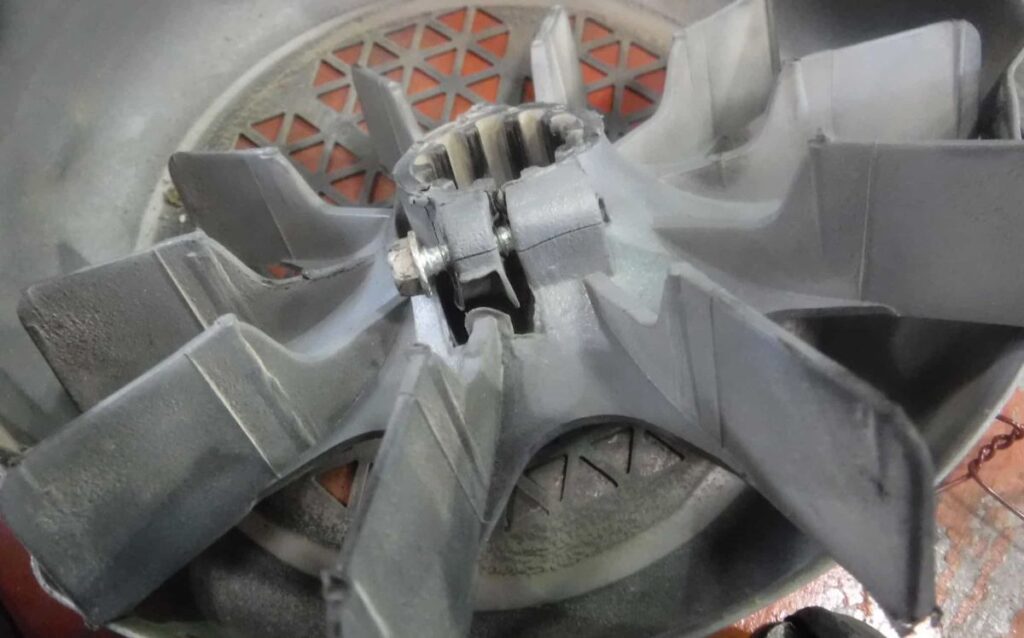
For example, Siemens uses a built-in plastic tab to lock the fan in place. You have to insert in this tab a strip of thin metal and the fan can be pried out easily.
10 tips on removing the fan of an electric motor.
1. Take note also how far the fan is from the end of the shaft so you can put it back the same way
2. Small plastic fans are usually held in place either by a snap ring or a clamp. Remove it and spray the shaft with a lubricant
3. Pry the fan out making sure that the tip of the pry bar is as close as possible to the base of the fan closest to the shaft. This is to avoid breaking the fan.
4. If the fan is too close to the end bell (end shield) and the pry bar won’t fit, use two long screwdrivers with a flat tip.
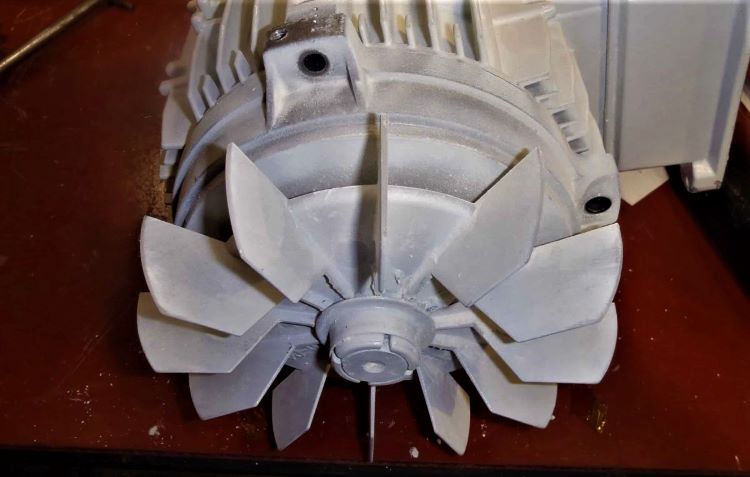
5. If it’s so close to the end bell that even a screwdriver won’t fit, try these three methods:
.
Method 1
- Remove all the end bell bolts
- Get a center punch or any steel drift smaller in diameter and put it at the center of the shaft where the fan is.
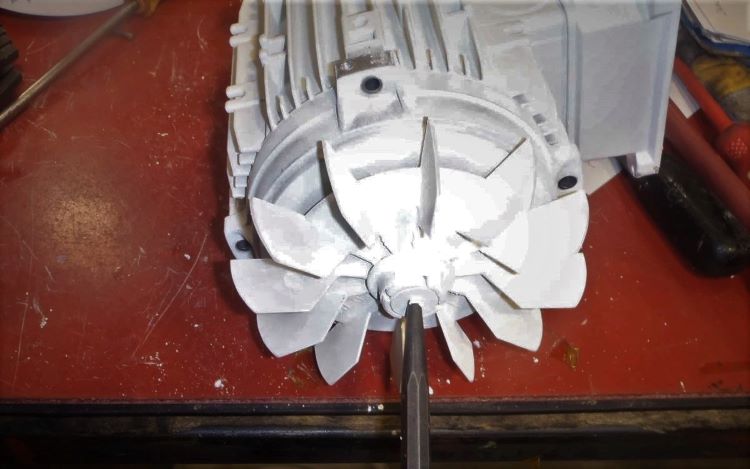
- Using a mallet and the center punch, drive the shaft going to the opposite end until the fan comes out.
- Do not let the rotor fall off the table
Method 2
Remove the end bell (end shield) that doesn’t have the fan.
Separate the rotor with the fan still attached from the stator.
Use an arbor press to remove the end bell and the fan at the same time.
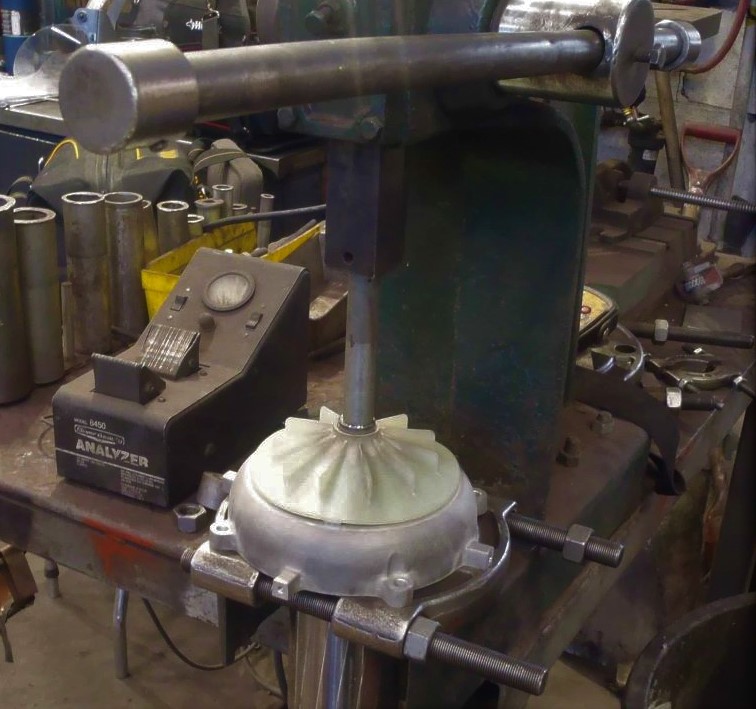
If there’s no arbor press, use blocks of wood, center punch, and a hammer.
Put the end bell fan side up on the blocks of wood with the shaft above ground.
Have someone support the rotor while tapping the rotor shaft out of the end bell and the fan.
Method 3
- With the fan still on the shaft, separate the end bell from the stator, by tapping the drive end shaft.
- Using a three-jaw puller, remove the end bell out, dragging the fan out with it.
6. As I mentioned some Siemens motors have a tab locking the fan through the groove on the shaft. Insert two thin strips of metal on those tabs and the fan can then be pried out.

7. Bigger plastic fans are held in place by a clamp. Loosen it up by unscrewing the bolts. Some clamps need a pair of pliers to remove and some have screws.
8. Again, pry out the plastic fan using two pry bars keeping the tip of the pry bars as close as possible to the base of the fan closest to the shaft to avoid damaging it.
9. Some plastic fans have openings to accommodate a small puller. Use the puller to remove the fan although setting it up takes a bit longer compared to just prying. Don’t forget to spray it with lubricant.
10. Bearing separator also works by placing it behind the fan then use the puller to remove the fan.
6 steps in removing the aluminum fan from an electric motor shaft
Most of the time you need heat to remove aluminum fans from the electric motor shaft. This is how you do it.
1. Remove the set screws holding the fan to the shaft.
2. Spray the shaft with lubricant and remove visible rust and corrosion from the shaft using emery cloth
3. Try and pry the fan out first. If it doesn’t want to go, use a puller
4. Sometimes there are openings to accommodate a small two-jaw- puller or bolt holes to bolt the puller jaws to the fan. It is not advisable to use the puller jaw on the outside diameter of the fan. You’ll break it.
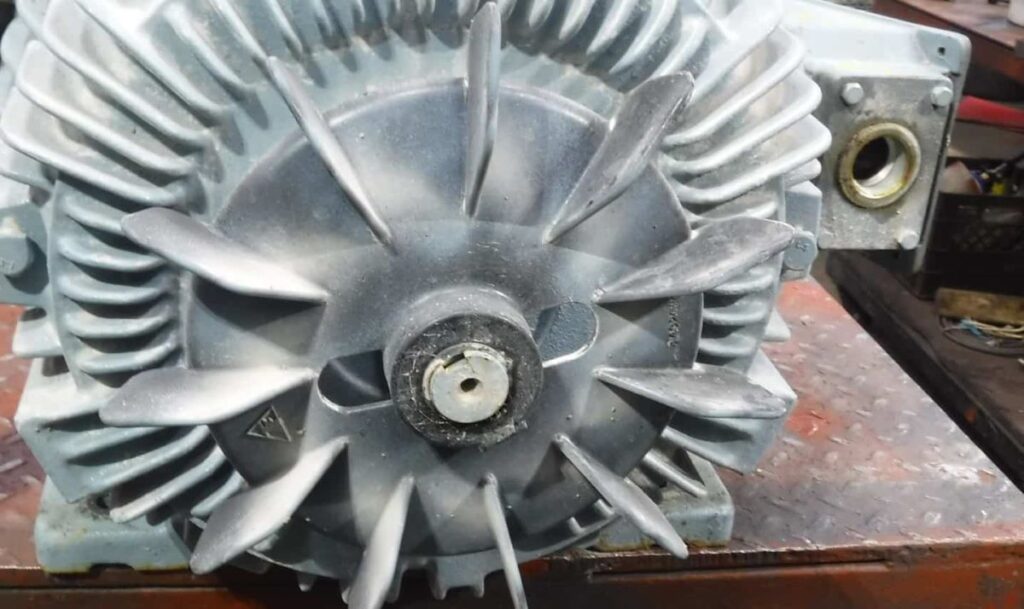
5. You can also use heat. Using either oxy-acetylene or a propane torch, heat the base of the fan. Do not heat the shaft. The idea is to expand the fan bore with heat while the shaft is cold.
6. Pry the fan out.
how to Remove a cast iron fan of larger motors
Most larger motors 100 horsepower and up have cast iron fans. To remove them,
1. Totally remove the bolt on the hub of the fan. Remove also the snap ring if there is any.
2. Most cast iron fans have a split hub. Insert a flat screwdriver on the split
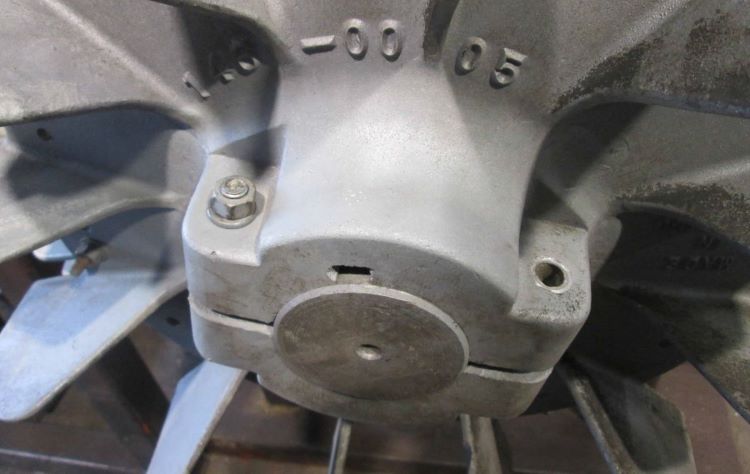
3. Insert and gently tap the screwdriver in the hub split until the fan loosens out
4. Pry the fan out. .
9 steps in removing a blower fan from the shaft of electric motors
Blower fans are easy to install when brand new. The set screws when tightened during installation sometimes create a nick on the shaft making it hard to remove
Blower fans are also ignored like it’s a maintenance-free unit. They’re not. They have to be maintained.
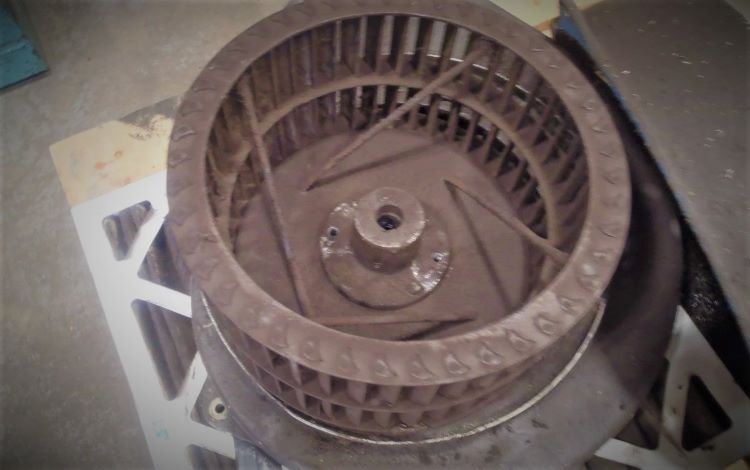
Fan accumulated with dirt caused it to be out of balance. They will then vibrate, create noise, damage the bearings, and the fan hub, making it hard to remove from the shaft.
To remove blower fans from the electric motor shaft, you are to remove the two set screws then the fan slides out. Supposed to be easy, but the older it gets, removing it becomes a challenge due to wear and corrosion.
Do the following suggestions in removing blower fans;
1. Remove the two set screws holding the fan.
2. Spray the shaft to fan fit with lubricating oil.
3. Gently pry the fan out. If there is no room, you can use two L-shaped pry bars to remove the fan. Avoid deforming it.
4. Another way of removing it is to drive the shaft out going the opposite way using a center punch. But before doing this, make sure that the bearing has no retaining cap or a bearing cap. Skip this if your motor has it.
5. First, remove all the bolts on the end bell opposite the blower fan.
6. Using a mallet and center punch, drive the DE shaft out of the stator. The process will at the same time separate the rotor from the stator, the end bell, and the fan.
7. Sometimes you can use a puller. Fans have bolt holes to accommodate a two-jaw-bearing puller. To keep the puller from disengaging, install a locking chain grip.
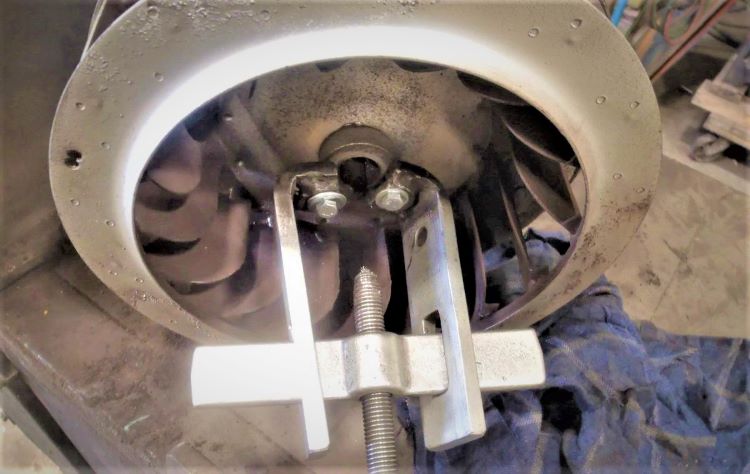
8. Another option is to use a three-jaw bearing puller, although there is no guarantee that the fan will not break or deform. Remember to position the jaw to the outermost part of the blower fan and a smaller puller cannot do that so use the proper size of puller for the job.
9. If it doesn’t want to go, heat the base of the fan first using oxy-acetylene or propane torch to loosen it from the shaft then try to remove the fan again. Do it slowly.
Removing the fan blades of an electric fan
Fan blades of an electric fan are held in place by a knob with a left-hand thread. This is designed to be that way for safety reasons.
As the fan rotates clockwise, the inertia tends to spin the knob counterclockwise which tightens it and does not loosen out.
1. Unplug the fan.
2. Loosen the clips and remove the front fan guard
3. With one hand holding the fan blades, loosen the locking knob going clockwise
4. Remove the fan
Removing the fan of a bathroom exhaust fan
It is a smart idea to regularly clean bathroom fans. Dust combined with humidity makes it out of balance resulting in noise and vibration shortening its life..
1. Pull down the fan cover. You might have to pry it a bit with a flat screwdriver so you could have a good grip.
2. Press together the clip holding the fan cover to release it from the unit.
3. Using a thin flat screwdriver, pry out the locking tab holding the fan from the motor shaft. Don’t lose it.
Conclusion:
These procedures are not concise because every situation is different.
In a motor shop setting, removing a fan is maybe easy because you have all the tools and equipment to use.
If you are in a place where the right tools are scarce, it may be challenging.
Different kinds and sizes of fans in different situations. Each have their own problems and difficulties.
Motor technicians have their tools, equipment, experience, and even colleagues to run to if they have difficulties. Some people don’t have those.
If you are encountering some difficulties or just have a question, we might be able to help.
Removing the fan of an electric motor (plastic, cast iron, or aluminum) Read More »

